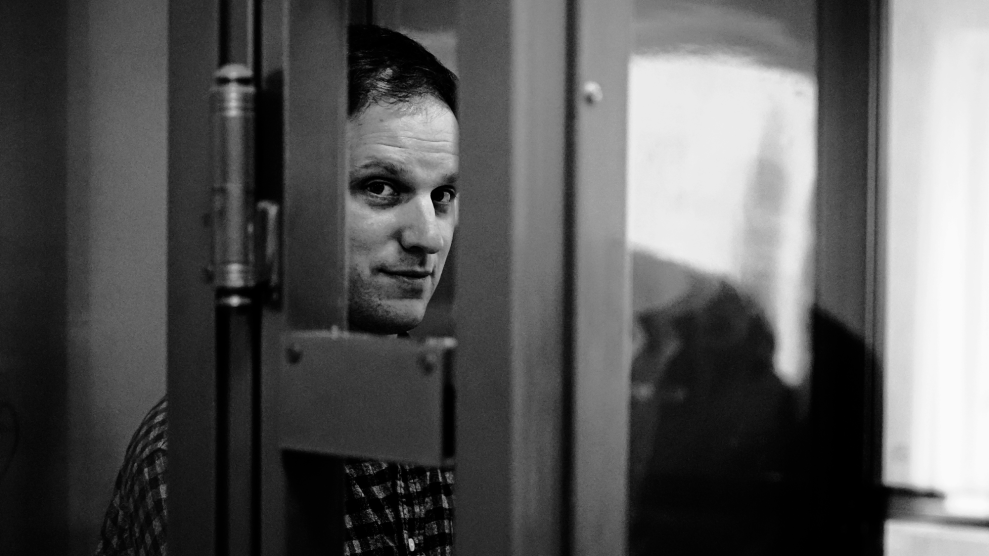Books
This House Has Fallen: Midnight in Nigeria
By Karl Maier. New York: PublicAffairs, 2000. 240 pages. $26. The imagery of Nigeria is as abundant as its resources — and its troubles. Nobel Prize winner Wole Soyinka famously dubbed his country “the open sore of the continent.” But for this trenchant political reportage, Maier has chosen novelist Chinua Achebe’s metaphor, the fallen house.
With a firm grasp of Nigeria’s embattled past — military coups, secessionist uprisings, clashes in the oil-rich Niger River Delta — Maier examines the nation’s cracked foundation and broken pillars. A veteran journalist who reported from Nigeria throughout the ’90s, Maier describes how the sudden death (a “coup from heaven”) of ruling General Sani Abacha had augured hope in 1998. But he finds the current democratic government faced with deep, perhaps irresolvable, problems.
Maier travels to the isolated north, where radical Muslims are pressing for Sharia, or Islamic law; to the explosive delta region, where he meets with the father of executed Ogoni writer, activist, and now martyr Ken Saro-Wiwa; and to the aids-ravaged slums of Lagos where the sick find comfort in a faith-healing Pentecostal minister. As he journeys across the perilous Nigerian landscape, Maier laments the speed with which the continent’s “showcase for democracy” has again become “the sick man of Africa.” — A.T.
Driving Mr. Albert: A Trip Across America With Einstein’s Brain
By Michael Paterniti. New York: Dial Press, 2000. 210 pages. $18.95. Dr. Thomas Harvey performed Albert Einstein’s autopsy in 1955 and inexplicably purloined the brain. Four decades later, Paterniti hunted down the 84-year-old Harvey and his cranial contraband, and their meeting spawned an extraordinary cross-country road trip — with the world’s most revered brain sloshing around in the trunk.
As he labors to decode the inscrutable Harvey, the author spins a lively biography of Einstein — as celebrity, genius, activist, and “original cosmic slacker.” He also dishes up memorable road fare, with the requisite riffs on Middle America and pit stops including Kansas’ all-concrete Garden of Eden and a surreal dinner with William S. Burroughs.
Paterniti’s writing is liveliest when he explores the theme of obsession — the stuff that made Einstein scrawl equations unto his death and compelled Harvey to worship a pickled brain. Paterniti himself is not immune, getting booted from a casino for pestering a cocktail waitress for her thoughts on Einstein. His self-conscious mania — far from detracting — breathes fresh life into the genre of writing from the open road. — K.M.
Levi’s Children: Coming to Terms With Human Rights in the Global Marketplace
By Karl Schoenberger. New York: Atlantic Monthly Press, 2000. 290 pages. $25. The subtitle of Schoenberger’s inchoate analysis of corporate conduct in the global marketplace begs a simple question: Are human rights really something we need to “come to terms” with? Shouldn’t rights, by de finition, be honored without negotiation?
Schoenberger, an editor at the San Jose Mercury News, provides no satisfactory answers. He takes great pains to explain why Tommy Hil figer, Nike, Gap, and other apparel giants use sweatshop labor and deal with brutal, authoritarian regimes: because pro fit motive demands it. In the course of shilling a free-market line, Schoenberger also takes potshots at human rights advocates he deems overzealous — all the while conceding the essential accuracy of their claims.
Looking for a model of corporate regard for human rights, Schoenberger plumbs the history of one clothier he believes always had its heart in the right place: Levi Strauss & Co. The family-run business had integrated its southern plants in the 1950s, boycotted South Africa, and steadfastly refused sweatshop labor. Ultimately, Levi’s provides a dispiriting model. When stock prices tanked in the mid-’90s, the company made a swift about-face — and began wiping out U.S. production in favor of overseas sweatshops no better than its rivals’. — D.B.
Private Warriors
By Ken Silverstein. New York: Verso, 2000. 224 pages. $25. Facing no credible threat, the Pentagon will spend $268 billion this year and crank out military hardware as if the Soviets were still at the door. In Private Warriors, Mother Jones contributing writer Ken Silverstein explores why “the United States can’t seem to put the Cold War to rest.”
He serves up a rogues’ gallery of pro fiteering hawks who use high-ranking connections to exert “a profound and dangerous” inßuence on U.S. defense policy. Some antics — like those of former Secretary of State Alexander Haig, who now consults for weapons makers and lobbies for China — are well known to the readers of this magazine. Others, like those of Nazi war hero-cum-U.S. arms dealer Gerhard Mertins, deserve to be.
Only by curtailing the inßuence of such private warriors, Silverstein argues, can we construct a rational defense policy — rather than one driven by “the pro fit motives and egos of a small group of hard-liners.” — J.B.
Music
Start With the Soul
Alvin Youngblood Hart. Hannibal, 2000. Delta blues and garage rock, deep-fried R&B and wispy psychedelia — they’re all the same to Alvin Youngblood Hart. On his third album, this remarkable artist glides from one groove to the next with sublime grace. Above all, Hart recalls Jimi Hendrix, not so much for the way he handles his ax, but in how he blends diverse elements into one warm, soulful sound.
Mixing instrumentals that spotlight his lonesome voice, Hart opens with the power-trio raveup “Fightin’ Hard,” and then gets funky on “Treat Her Like a Lady.” The jaunty “Back to Memphis” unearths a forgotten Chuck Berry gem, while “Porch Monkeys’ Theme” recalls the heady days of jazz-rock fusion. Hart’s touchstone remains the blues, and he’s at his best on “A Prophet’s Mission.” In lesser hands, Start With the Soul would be a wreck. Instead, it’s a fine-tuned ride. — J.Y.
Tonic
Medeski, Martin, and Wood. Blue Note, 2000. The trio of John Medeski, Billy Martin, and Chris Wood rose to prominence in the ’90s on the strength of groove records that became requisite party music for hipsters of the time. But fans expecting more fat bass hooks and churchy organ swells will be surprised by this ambitious album of jazz improvisation that’s far too cerebral for any serious booty shaking.
MMW’s superb cohesion is most apparent on “Seven Deadlies,” which oscillates between fast swing, breakneck double time, and an improbable bluesy shufße. Only a seasoned group could execute this tune so seamlessly. And only musicians who’ve paid serious dues could convince their label to promote what is so clearly a labor of love. — A.R.
‘Til We Outnumber ‘Em
Various Artists. Righteous Babe, 2000. It’s no surprise that Dust Bowl troubadour Woody Guthrie continues to inspire, but who knew he could throw such a party? Recorded live at a 1996 Rock & Roll Hall of Fame tribute concert, ‘Til We Outnumber ‘Em crackles with warmth, irreverence, and the joyous power of simple tunes.
Ramblin’ Jack Elliott’s scruffy “1913 Massacre” revisits Woody’s crusade against powerful bullies, evoking timeless moral outrage. Bruce Springsteen waxes mournful on “Plane Wreck at Los Gatos” and gets silly for “Riding in My Car.” Celebrants also include son Arlo, the Indigo Girls, Billy Bragg, and David Pirner. Spoken-word segments from the likes of Tim Robbins spotlight Woody’s plain eloquence, but the songs honor him best. — J.Y.
Film
The Gospel According to Mr. Allen
Edward Rosenstein. 52 minutes. EyePop Productions, 2000. James Allen considers himself a “bag man.” He collects the fragments of the people shattered by drugs and helps them put themselves together — with an unshakable faith and the uplifting spirit of gospel music. Since he established Harlem’s Addicts’ Rehabilitation Center (ARC) in 1957, the stoic Allen has helped more than 30,000 addicts pick up the pieces.
Without ßair or pretense, the film chronicles three addicts as they go through the ARC. The recovery process begins with two weeks of house arrest — after which rehabbers are encouraged to audition for the center’s gospel choir. Michelle, the most affecting of the three case studies, enters the center devastated by alcohol and crack. Rosenstein dramatizes her life without exploiting her emotions. During a harrowing account of her stillborn daughter — nurses had to separate them as Michelle tried to dress the child in baby clothes — the camera never lingers on her distraught face.
Rosenstein avoids the clichés of redemption narratives by never disclosing the fate of the addicts. And the film ends on the same high note with which it begins: The choir sings of redemption from drugs, Mr. Allen conducting their hallelujahs. — T.S.
You Don’t Know What I Got
Linda Duvoisin. 90 minutes. Superjane Films, 2000. Duvoisin’s search for “undying passion for life” led her to five women who share a rare combination of creativity and pragmatism. You Don’t Know profiles a 92-year-old adobe architect; a Minnesotan poet; a police of ficer; a retired housekeeper; and Ani DiFranco, singer-songwriter and totem of indie-music grrrls everywhere.
The editing is superb, juxtaposing each woman’s commentary to create a grand five-way conversation. With performance footage, old photos, and on-the-job interviews livening the visual mix, the quintet discuss everything from love and religion to sexual politics and Jim Crow. The nonagenarian architect provides You Don’t Know’s most memorable line: “The urge,” she says, “not the big bang, started this all up.” — L.M.J.











